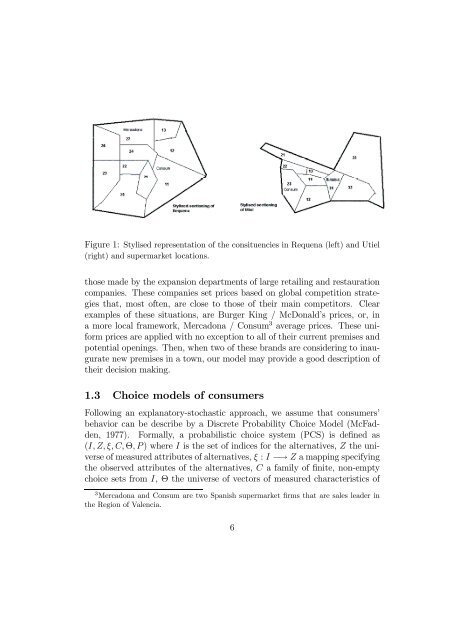Download PDF - Ivie
Create successful ePaper yourself
Turn your PDF publications into a flip-book with our unique Google optimized e-Paper software.
Figure 1: Stylised representation of the consituencies in Requena (left) and Utiel<br />
(right)andsupermarketlocations.<br />
those made by the expansion departments of large retailing and restauration<br />
companies. These companies set prices based on global competition strategies<br />
that, most often, are close to those of their main competitors. Clear<br />
examples of these situations, are Burger King / McDonald’s prices, or, in<br />
a more local framework, Mercadona / Consum 3 average prices. These uniform<br />
prices are applied with no exception to all of their current premises and<br />
potential openings. Then, when two of these brands are considering to inaugurate<br />
new premises in a town, our model may provide a good description of<br />
their decision making.<br />
1.3 Choice models of consumers<br />
Following an explanatory-stochastic approach, we assume that consumers’<br />
behavior can be describe by a Discrete Probability Choice Model (McFadden,<br />
1977). Formally, a probabilistic choice system (PCS) is defined as<br />
(I,Z,ξ,C,Θ,P)whereI is the set of indices for the alternatives, Z the universe<br />
of measured attributes of alternatives, ξ : I −→ Z a mapping specifying<br />
the observed attributes of the alternatives, C afamilyoffinite, non-empty<br />
choice sets from I, Θ the universe of vectors of measured characteristics of<br />
3 Mercadona and Consum are two Spanish supermarket firms that are sales leader in<br />
theRegionofValencia.<br />
6
















